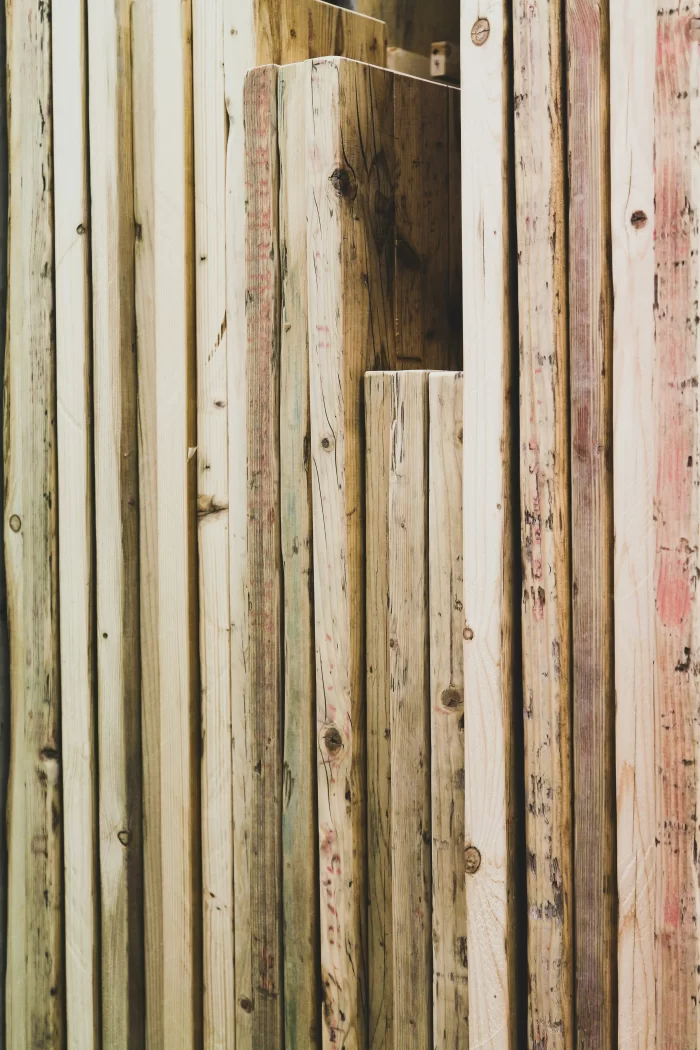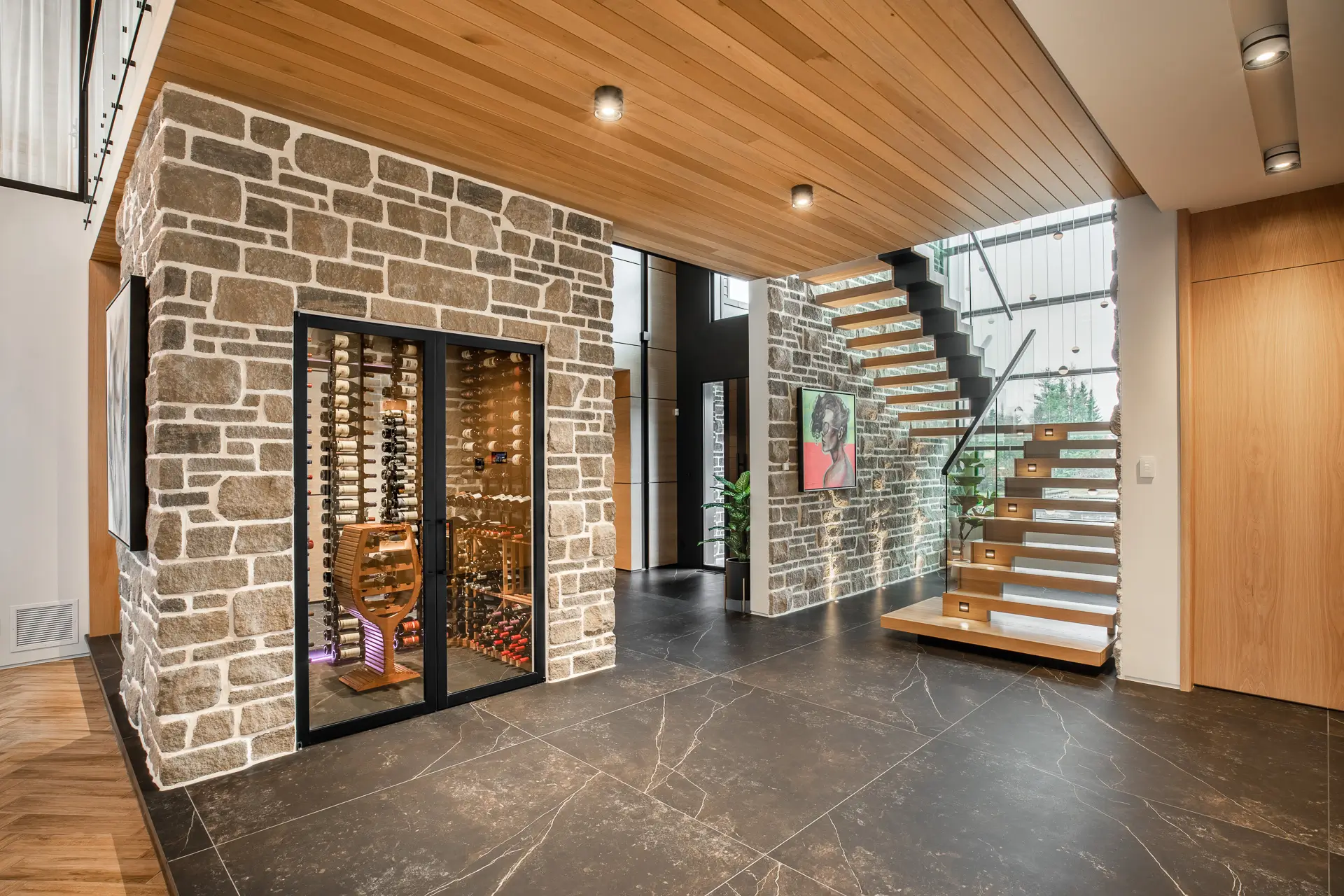Whether you’re building or renovating your home, choosing materials is a crucial step in your project. While aesthetics and budget play an important role, it is equally important to consider the durability and environmental footprint of products. In fact, some materials can be a true long-term investment, when you consider their lifespan. Then there’s the question of environmental impact : are you making an environmentally responsible choice?
When it comes to interior doors, which have the potential to add privacy and elegance to your home, it’s important to make a decision that aligns with your values and needs. Let’s take a tour of the eco-friendly options available on the market and compare their pros and cons.

Known for its durability and resistance to wear and tear, aluminum is an excellent choice for interior doors. Easy to care for, it retains its appearance over the years and requires little maintenance.
Aluminum is a 100% recyclable material, and that can be remelted and reused indefinitely without losing any of its properties. This aspect makes it an excellent ecological choice for doors,reducing environmental impact throughout its life cycle.
It’s a well-known fact that aluminum is a corrosion-resistant metal! Aluminum is naturally protected from rust by the formation of an oxide layer that shields the metal from moisture. This makes it the perfect material for interior doors, offering both durability and low maintenance.
Aluminum is a low-density metal, making it lightweight. As a result, aluminum interior doors are easy to operate while remaining strong.
Although aluminum interior doors may cost a little more up front, they are a true long-term investment. Because they are durable, resistant and timeless, the savings are undeniable.

Bamboo is a fast-growing plant that requires very little water and resources to develop. While a deciduous tree requires 150 liters of water per day, bamboo requires only 1000 mm of water per year.
Bamboo is naturally biodegradable. However, for products such as interior doors, it is typically treated to increase its durability and strength (such as drying, pressing, or applying varnishes and finishes). These treatments can slow down the degradation process or even prevent it altogether if chemicals or resins are used.
One of bamboo’s biggest drawbacks is its transportation. Native to Asia, bamboo must travel thousands of kilometers to reach North America. Transportation, which generates significant greenhouse gas emissions, is therefore an important factor to consider when evaluating the green credentials of the material.
In addition, in some countries where bamboo is grown, such as China, the use of non-renewable energy adds to the carbon footprint of this material.
Bamboo is a highly invasive plant that can disrupt local ecosystems by replacing other plant species and contributing to deforestation. This poses an environmental challenge, as large-scale bamboo cultivation can be detrimental to biodiversity.

Choosing recycled wood for your interior doors helps reduce the use of virgin resources and help preserve forests. Recycling wood also keeps waste out of landfills.
Wood is a renewable resource, but it is important to ensure that it comes from sustainably managed forests.
Wood is a natural insulator that helps reduce energy loss, making it an environmentally friendly choice. It also absorbs sound, providing greater privacy between rooms. However, wood’s insulating properties are not the most efficient on the market, with glass and metal offering significantly better performance.

Made from silica, soda, and hydrated lime, soda-lime glass is a fully recyclable material. Unlike many building materials, it can be recycled indefinitely without losing its properties. This helps reduce waste generation and lowers the overall environmental impact. When glass doors reach the end of their life cycle, they can be reclaimed and reused, contributing to a more circular production cycle and less waste..
Glass is an extremely durable material that can withstand the elements. When properly maintained, it can last for many years without deteriorating. Unlike some materials that degrade over time (such as wood or plastic), glass retains its integrity, appearance, and functionality. In addition, glass does not corrode, making it particularly well-suited for indoor environments
Energy efficiency of glass doors
Glass used in interior doors can be designed to provide good thermal and acoustic performance. For example, special glazing, such as double or triple glazing, helps to maintain a stable indoor temperature, thereby reducing the energy consumption required for heating and cooling. This helps to reduce carbon emissions associated with household energy use.
Glass doors maximize the entry of natural light into interior spaces, helping to reduce the use of artificial lighting during the day and thus saving energy. By allowing a better circulation of light, glass helps to create a healthier and more comfortable environment, which is also a positive factor when making an environmentally friendly choice.
Glass is easy to clean and requires minimal maintenance compared to other materials, such as wood, which may require regular treatments (varnish, paint, etc.) to stay in good condition. The easy cleaning process reduces the use of chemicals and resources needed to maintain the door, making it an environmentally friendly choice in terms of maintenance.
If you have chosen aluminum or glass for its durability and reduced environmental impact, we offer a wide selection of high-quality options that will seamlessly integrate with your interior design. Additionally, InterFonction specializes in custom projects that allow you to express your creativity while adhering to eco-friendly principles.
In conclusion, choosing the materials for your interior doors is an important decision that affects both the aesthetics of your space and your carbon footprint. Aluminum, bamboo, recycled wood, and glass are all eco-friendly materials with their respective advantages and disadvantages. It is important to carefully consider factors such as durability, maintenance, carbon impact, and the source of the materials before making a choice.
By choosing eco-friendly doors, you are not only contributing to a healthier environment, but you are also investing in durable products that will serve you for many years to come.